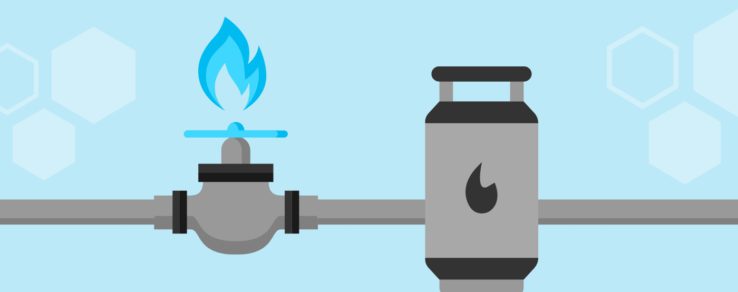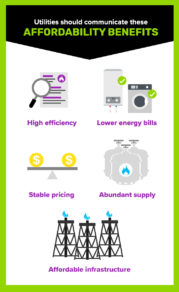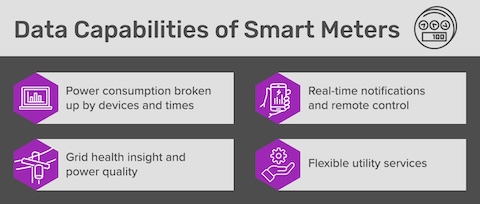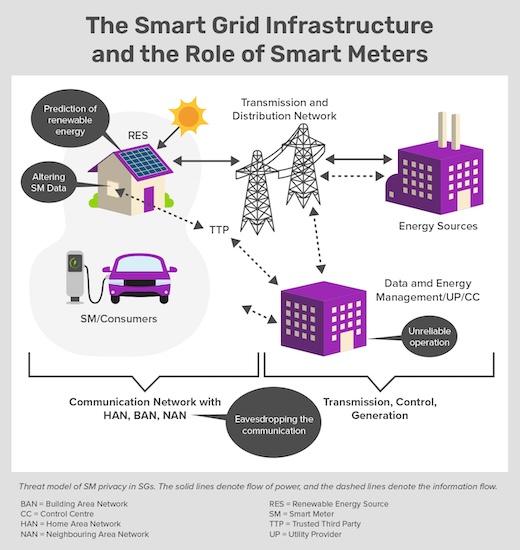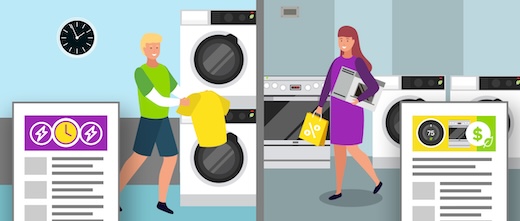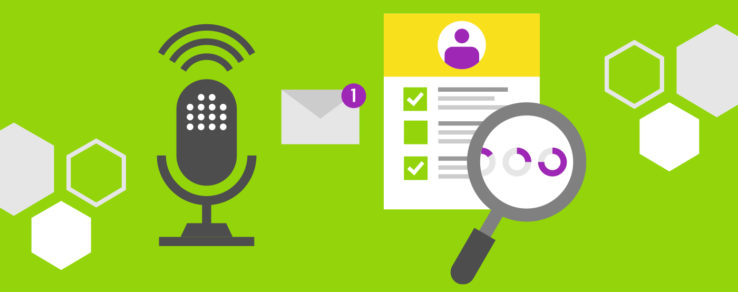This is shaping up to be a transformative year for the utility industry.
With advancements in technology, more personalized content and a greater focus on energy equity, utility marketers have the opportunity to build stronger customer relationships than ever before in 2025.
It’s a new year — and that means a fresh start to your marketing strategy. Discover the top utility industry trends shaping the future of utility communications in 2025 and beyond.
Meeting Customer Expectations With Hyper-Convenience
In today’s fast-paced world, customers increasingly seek greater convenience from every company they interact with, whether their favorite online retailer or energy provider.
Consumers demand services that are easy, fast and tailored to their needs and preferences. This trend, known as hyper-convenience, will continue to gain momentum as customers become accustomed to more convenient and streamlined experiences.
To keep up, energy providers must incorporate utility industry trends into their marketing strategies and provide outstanding customer experiences, from personalized communications to easy access to programs, services and resources.
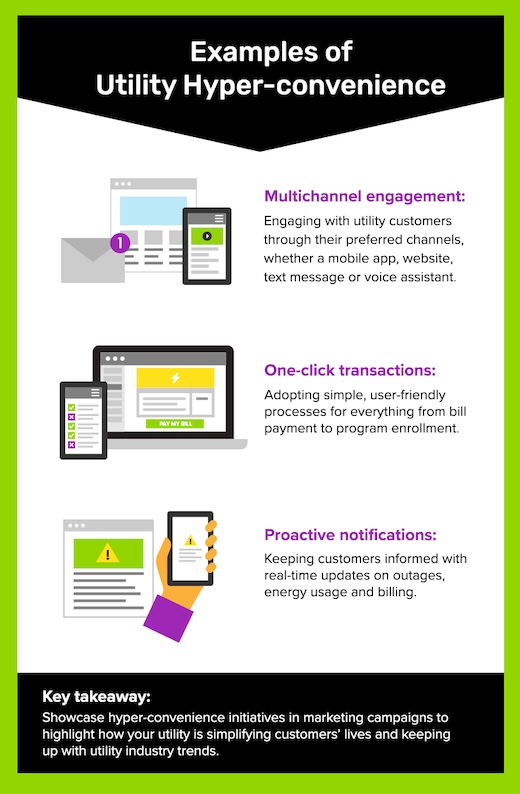
Examples of utility hyper-convenience include:
- Multichannel engagement: Engaging with utility customers through their preferred channels, whether a mobile app, website, text message or voice assistant.
- One-click transactions: Adopting simple, user-friendly processes for everything from bill payment to program enrollment.
- Proactive notifications: Keeping customers informed with real-time updates on outages, energy usage and billing.
Key takeaway: Showcase hyper-convenience initiatives in marketing campaigns to highlight how your utility is simplifying customers’ lives and keeping up with utility industry trends.
According to Matt Buecker, Senior Manager of Marketing and Customer Education at Baltimore Gas & Electric (BGE), utilities should focus on making every touchpoint in the customer journey as convenient as possible, from bill pay to program enrollment. Buecker also emphasizes the importance of continuously improving digital experiences to meet ever-changing customer expectations.
“As utilities, we do a lot of things with the goal to improve engagement, like creating an app or building a one-click landing page,” Buecker says. “However, we sometimes forget to come back to the experience and make enhancements. We should always be thinking of ways to expand capabilities and make the digital experience even better.”
For example, BGE makes it easy for customers to move their gas or electric service via their website. Moving is oftentimes a stressful experience, but this online form gives customers one less thing to worry about. Customers can choose from starting, moving or stopping their service. The utility also sends segmented emails to renters around the time their lease may be up for renewal to educate them about this convenient service.
Another example of digital trends in utilities is PSEG Long Island’s MySmartEnergy Portal, which makes it easy for residential and business customers to take control of their energy use. Accessible through the utility’s My Account, the portal allows customers to see their daily, weekly and monthly usage and track potential causes for higher or lower usage, such as weather changes or installing energy-efficient appliances.
Personalizing the Utility Customer Experience
In today’s modern world, personalization goes beyond adding a customer’s name to an email subject line. Utilities use advanced data analytics to deliver content and programs that align with individual preferences.
Examples include sharing energy-saving tips tailored to a customer’s home or sending relevant rebates to electric vehicle owners. One of the most essential utility industry trends in 2025, personalization fosters stronger relationships and higher engagement rates.

Examples of utility personalization include:
- Tailored energy insights: Providing customers with personalized energy reports based on their usage patterns, highlighting opportunities for energy savings and cost reductions.
- Custom alerts and notifications: Sending real-time updates about outages, billing due dates and energy usage thresholds tailored to individual customer preferences.
- Customized email campaigns: Creating targeted email campaigns addressing customer needs, such as financial assistance programs for eligible households.
- Localized content: Sharing updates or promotions relevant to specific neighborhoods or regions, such as new projects or community events.
Key takeaway: Customers expect communications that feel relevant and meaningful. Utilities need to invest in personalization to see improved engagement and loyalty.
Utility industry trends, like personalization, allow utilities to address customer needs, concerns and preferences. BGE marketers recognized that an area of their service territory was experiencing lower customer satisfaction due to outage-related issues. To let customers know they understood their concerns about reliability, BGE created targeted messaging for specific zip codes.
“We were able to identify customers in this part of town and how they consumed media,” Buecker says. “Then we took one of our campaigns centered around what we’re doing in the reliability space and targeted those customers. The campaign, which included emails, social media ads and even traditional media like bus shelter advertising, spoke to how BGE is working to make reliability better in their area.”
Personalization can also be used to better connect customers to valuable resources. FirstEnergy utilized SmartVX to connect with 181,200 customers and simplify complicated financial assistance information. The personalized videos used customer data to deliver highly targeted messages about one or more assistance programs.

In the first four months of deployment, the videos achieved4,802 call-to-action (CTA) clicks and 10,413 unique video views. FirstEnergy achieved a 6.2% engagement rate in program enrollments in 2024, resulting in a 2% increase in engagement from the previous year.
“We particularly appreciated the ability to personalize the content for each of our income-eligible customers, a feature that significantly enhanced the effectiveness of our outreach,” says Nicole Frankenberry, Assistant Business Analyst at FirstEnergy. “The option to provide information in Spanish was a thoughtful addition, allowing us to better serve our customers and foster inclusion.”
Revolutionizing Customer Engagement With AI
One of the top digital trends in utilities today, Artificial Intelligence (AI), has become a game-changer for how utilities interact with their customers. From personalizing customer experiences to providing self-service options, AI enhances efficiency and satisfaction across the board.
By embracing AI, utilities can build stronger customer relationships, increase operational efficiency and achieve program goals. Utilities that invest in this utility industry trend will be better positioned to meet the challenges of tomorrow’s energy landscape.

By leveraging AI, utilities can:
- Deliver personalized experiences: AI helps utilities analyze customer data, such as energy usage patterns, preferences and demographics, to create highly personalized messages.
- Enhance efficiency: Manual processes can be time-consuming and prone to error. AI automates routine tasks, like email segmentation, message optimization and data analysis, saving time and improving accuracy.
- Drive engagement: AI-powered tools can create compelling, data-driven content that resonates with customers, boosting engagement rates across multiple channels.
Key takeaway: AI empowers utilities to deliver personalized experiences, enhance operational efficiency and drive customer engagement through data-driven insights.
Generative AI, such as ChatGPT and Copilot, can be invaluable utility industry trends for customer-facing communications. Utility marketers often communicate to customers about complex topics containing technical industry lingo. AI can make these complicated topics more understandable and easily digestible to the average customer.
“I think AI is very helpful when it comes to communicating about these complex topics we deal with on a daily basis,” says Alex Trefry, Public Relations Specialist at Colorado Springs Utilities. “For example, you can tell AI to write at a sixth or eighth grade reading level.”
Another example of digital trends in utilities, Colorado Springs Utilities uses AI for sentiment tracking on social media. This tool allows the utility to track customer feelings and attitudes toward marketing campaigns, public service announcements and other social media posts.
“It’s a great way to ensure the messaging we have is on the right track, and if not, discover ways to adjust the tone to better connect with customers,” Trefry says. “There still needs to be that human involvement every step of the way, but it’s very useful for making sure our messages have the impact we intend them to have.”

Georgia Power‘s Marketing and Communications team plans to use AI to identify customers with higher bills during peak energy seasons. This utility industry trend will enable the utility to send personalized communications, such as directing eligible customers to energy assistance programs before they seek help.
These proactive communications will provide customers with a positive experience and reduce inquiries to the utility’s call center. AI can also help the utility with marketing tasks at scale, such as pulling customer data (e.g., zip codes, income level) and targeting customers with beneficial programs.

Preparing for the Future
As utility industry trends gain even more momentum in 2025, professionals are embracing these innovative tools and prioritizing customer-centric strategies. From leveraging AI to meeting customer demands for hyper-convenience, utilities are reshaping how they communicate and connect with their customers to build stronger relationships and foster greater trust in an ever-evolving landscape.

